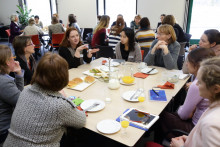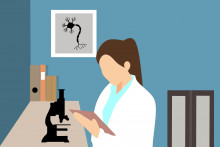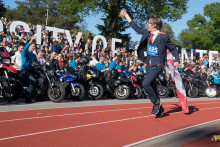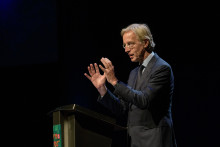Open letter to
The Chairman and Members of the UT Executive Board
UT News
Copy to:
Deans
Secretary of the University
Acting HR Director and Sr. Policy Advisor Talent and Management Development
Dear Chairman and Members of the UT Executive Board,
We are pleased at his commitment to "gender diversity" on a larger scale than “just” at the UT. Year after year, the results of the "Talent to the Top" Monitor show that the representation of women in the top and second tier of Dutch universities is still a ‘sad story’.
The figures for 2014 show the average representation of female academics in Dutch Universities to be 17.8% at the top level and 26.3% in the second tier.
If a minority representation is no longer to be the “exception to the rule” and is to be able to be heard, the threshold is 30%. So the Dutch universities have plenty of work to do. Fortunately, the figures for the support staff are significantly better, at 38.2% and 40% respectively.
What about the home front?
A brief review. In 2005 female academics came together to form the Female Faculty Network Twente (FFNT). Women belonging to the support and management staff followed in 2007 with the OBP Women's Network. In 2006, at the initiative of the Executive Board, the Ambassador Network was formed. This is a network composed of a select group of men and women from the schools/faculties who are at the top of the organization in their field, which is committed to help make up the arrears women are experiencing at all levels in the university .
Former Executive Board Chairman Anne Flierman proved himself a passionate advocate of gender diversity. In 2007 the UT, as one of the first universities in the Netherlands, took the initiative of offering something extra to talented women who have the potential to grow to the top. The "UT Incentive Fund" was established, followed by the "UT Aspasia Fund". At the central level, the position of "coordinator diversity" was created to support policy development, implementation and monitoring. In 2009, a policy memorandum "Recruitment and promotion of women at UT 2009" was published.
The UT joined the Charter Talent to the Top. In all faculties and UT-wide, targets for the representation of women in the top and second tier of the organisation were established for the year 2014.
In 2014 Talent to the Top honoured the university with a Diamond Award for leadership and embedding gender diversity at the top of the organization, as the best in the subsection "Education and Research".
Did these measures bear fruit?
Most certainly! By the end of 2014, the university had significantly improved the percentages which was a creditable result given the targets set for 2014.
|
Academic staff |
31-12-2008 (without ITC) |
Realisation 31-12-2014 |
Targets 2014 |
|||
|
# |
% |
# |
% |
# |
% |
|
|
Top |
11 |
6 |
29 |
15,1 |
28 |
15,4 |
|
2nd tier |
18 |
12 |
30 |
16,8 |
37 |
22,0 |
|
Support staff |
||||||
|
Top |
5 |
17 |
9 |
32,1 |
8 |
31 |
|
2nd tier |
5 |
18 |
10 |
35,7 |
10 |
37 |
And is the work now finished?
Certainly not! Our percentages for the academic staff are still well below the 'tipping point’ score of 30%. We do not even equal the 'sad' average score for Dutch universities overall. And while the percentage for support and management staff does exceed the tipping point of 30% UT-wide, this does not mean that it has been achieved in all individual departments; moreover, why not aim for 50%?
Will the UT be doing something extra then?
Apparently not! This emerges from the Board’s letter of January 6, last, to the networks which stated that the core of its gender diversity policy will simply be to maintain a general focus on:
• Awareness
• Neutrality Policy
• Support for individual women.
The focus areas in themselves are not a source of concern. Attention for the context in which we do our work together, we applaud. Creating awareness of the existence and persistence of stereotypes about men and women (in other words, what is the "norm" and what is "different") is of great importance for all women and men at the UT.
Awareness is also a prerequisite for policy neutrality. The announced "mindbug workshops" will definitely give awareness a boost. However, these workshops will only contribute to a lasting behavioural change if organized UT-wide and repeated regularly for as long as is needed, i.e. until a gender-inclusive attitude and behaviour has become "second nature" for everyone. In other words, until the tipping point of a representation of 30% amongst academic staff is approached. And to us it seems only logical that next to a firm commitment at the organizational level the UT continues to facilitate the progression of individual talented women too.
What we are very concerned about are the consequences of this limited focus. In particular that the actions to ensure any further increase in the proportion of women in top and second tiers of the UT are left to deans and directors. As long as gender-inclusive thinking and action is not everyone's second nature, gender diversity requires 'extraordinary' attention, ‘extra’ effort and above all the realisation that the issue needs continual re-emphasis.
In 2011 it was decided to reduce the capacity of the central coordinating position for diversity, and to eliminate it altogether as of July 1 2015. This sends a signal – both within and outside the UT- that at the UT the supportive “scaffolding” can begin to be removed because gender diversity has reached the point where it can stand on its own two feet, without any support mechanisms. Perhaps in 2011 it was hoped this would be the case. The reality of today however is different. This measure will make it difficult, if not impossible, especially for the ambassador network to continue to do its work. As a further consequence, both the practical functioning of the two UT support funds and the support for individual women is put at risk.
Dear Chairman, we want to believe that you aspire to be more than the figurehead for gender diversity at Dutch universities, and actually intend to make a real difference. We also want to believe that you understand that a single series of “mindbug workshops” for just a limited group will have no lasting effect on its own. And finally that you are keen to procure the "extra" resources, policy measures and manpower that gender diversity and gender inclusiveness, i.e. recruitment, promotion and retention of talented women at the UT requires.
We challenge you to explicitly include gender diversity in your aspirations for Vision 2020. A key step to start with is calling for all faculties and departments to set targets for 2020.
Our commitment remains undiminished and we hope for, and trust in, the continuation of our fruitful cooperation,
Ambassador Network
Female Faculty Network Twente
Women's Network for Support and Management staff
Coordinator Diversity







